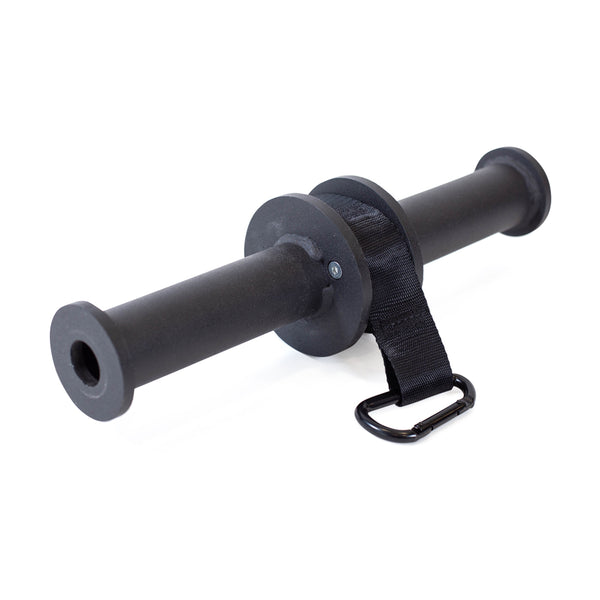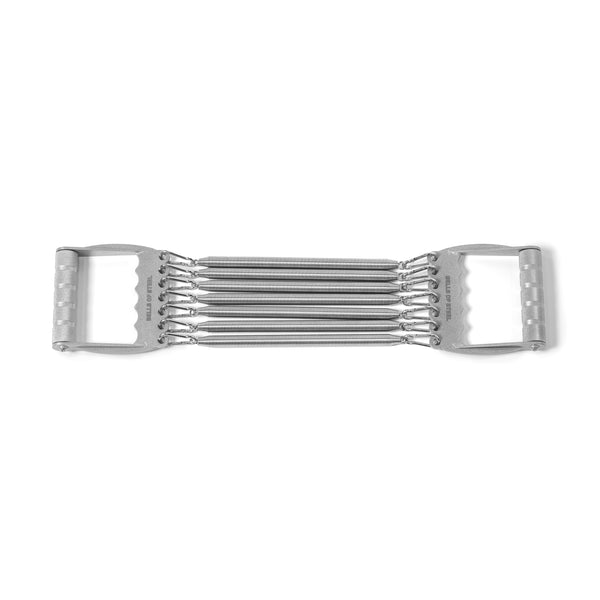Climbing demands more than strong legs and lungs—it’s your grip that often decides whether you send a route or slip off the wall. At the same time, lifters know a weak grip can hold back their deadlift or row. That’s why cross-training grip strength is essential for climbers and lifters alike. By improving grip endurance, power, and finger strength, you build a stronger foundation for both vertical and barbell performance.
Why Grip Strength Matters for Climbers and Lifters
Grip Strength in Climbing
Climbers rely heavily on their forearms, fingers, and thumbs to stay attached to the wall. Weak grip leads to “pump” setting in faster, forcing an early retreat. Stronger hands mean better endurance, more secure holds, and greater confidence on difficult routes.
Grip Strength in Lifting
In strength training, grip dictates control. Deadlifts, rows, pull-ups, and carries are only as good as your ability to hold onto the bar. Lifters with stronger hands can train heavier and longer without relying on straps.
The Cross-Training Connection
Climbers who lift get more resilient joints, balanced musculature, and stronger pulling power. Lifters who climb develop endurance, tendon strength, and fine motor control. Grip training bridges both worlds, making it a win-win for anyone serious about performance.
Best Exercises to Increase Grip Strength for Climbing
Dead Hangs
Hang from a pull-up bar or hangboard to mimic climbing demands. Start with bodyweight holds and progress to weighted hangs for advanced training. Try it on the Globe Pull-Up Bar to really replicate training.
Farmer Carries
Walking with heavy dumbbells, kettlebells, or specialty implements builds crushing grip and core stability. Bells of Steel Mighty Grip Plates or heavy dumbbells make this an easy addition to your program.
Plate Pinch Holds
Pinch two weight plates together (smooth side out) and hold for time. This develops pinch strength critical for small holds and edges.
Wrist Roller Training
Using a wrist roller, roll weight up and down with only your forearms. This blasts grip endurance and strengthens forearm extensors often neglected by climbers.
Axle Bar Deadlifts and Holds
A thick bar like the Bells of Steel Axle Bar makes every pull and hold brutally harder, forcing the forearms and hands to adapt.
Rope or Towel Pull-Ups
Wrap a towel or rope over a bar and perform pull-ups. This variation increases grip engagement and mimics climbing-specific pulling strength.
Adjustable Forearm Gripper Work
For progressive overload on crush strength, the adjustable forearm trainer allows gradual increases, just like barbell lifts.
Best Bells of Steel Gear for Climbing Grip Strength
- Globe Pull Up Bar - arguably the best gear for increasing grip strength for climbing, the round surfaces will set your hands on fire.
- Axle Bar – Forces a vice-like grip for deadlifts and holds.
- Fat Grips – Turn any bar, dumbbell, or cable handle into a grip challenge.
- Wrist Roller – Simple, brutal, and effective for forearm endurance.
- Adjustable Forearm Trainer – Train crush grip progressively.
Shop all Grip Training Gear Here
FAQs on Increasing Grip Strength for Climbing
How often should climbers train grip strength?
2–3 sessions per week is enough. Too much direct grip work can strain tendons and slow recovery.
Can lifting weights improve climbing grip?
Yes. Exercises like farmer carries, deadlifts, and plate pinches strengthen the same muscles and tendons climbers rely on.
Do hangboards really work for grip training?
Yes, but they should be used progressively. Beginners should build a base with dead hangs and bar work before moving to specialized hangboards.
Is grip strength genetic?
Genetics play a role in hand size and tendon thickness, but consistent training improves grip significantly for everyone.
How long does it take to see improvements?
With consistent training, climbers and lifters can see noticeable grip gains in 6–8 weeks.
Final Thoughts on Grip Strength for Climbing
Grip strength is the bridge between climbers and lifters. By training it smartly with a mix of endurance, crush, and support work, you’ll improve climbing performance, unlock heavier lifts, and protect your joints. The right exercises and tools, from dead hangs to axle bar lifts, ensure your grip never limits your progress on the wall or under the bar.



